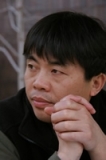Zhao Kailin
Chinese

Born Zhao Kalin in Bengbu 1961, the artist has become an important Chinese master of contemporary realism. At an early age, Kailin understood that he wanted to be involved in the arts. “By eight, I knew I wanted to be a painter,” Zhao relates. “It was my second grade teacher in elementary school who taught me basic painting skills and encouraged and challenged me. Most important, she taught me how to soar with imaginary wings through the secret world of art.” Under her tutelage, Zhao’s painting abilities matured, so much so that his work began appearing in juried shows in Bengbu.
In 1988, Zhao Kailin earned a placement at the prestigious oil painting department of Beijing’s Central Academy of Fine Arts, China’s most illustrious and rigorous fine arts institution. There, he studied traditional western-style oil painting. During this period of intensive training, Zhao studied the paintings of Italian Renaissance painter Carravagio and Dutch Renaissance master Rembrandt. He was intrigued by the brushwork, color and commanding manipulation of light in their oeuvres. Concurrently, Kailin familiarized himself with the portraiture of painter John Singer Sargent. In particular, Sargeant’s painting Madame X (1884), depicting a full length portrait of a porcelain-skinned woman dressed in a long black dress captured Kailin’s attention. In fact, this painting Seated Lady with Fan may be his answer, his ode to Sargeant.
Zhao’s oeuvre has at its core paintings of introspective young women, most of whom are Asian and dressed in traditional Chinese attire and sometimes with musical instruments. These paintings capture the spirit of young women suspended between the innocence of childhood and the smoldering sexuality of womanhood, evoking emotions of longing, dreams and desire.
Says the artist: “Every painting I do involves personal stories and memories…” Zhao explains, “I am always striving to communicate not only the beauty and unspoken personal narratives of these women, but also the inherent beauty of Chinese culture and life.”




